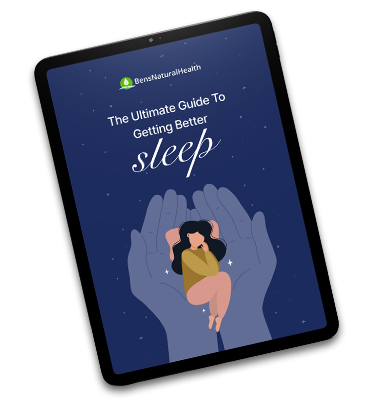You might have heard about the Blue Zones Diet before, but do you know where it came from and what foods it involves?
The Blue Zones Diet originated in 2004.
According to the Blue Zones Project, “In 2004, Dan Buettner teamed with National Geographic, the National Institute on Aging, and the world’s best longevity researchers to identify pockets around the world where people lived measurably better, longer.
In these five areas, dubbed “blue zones,” researchers found that people reach age 100 at a rate that is ten times greater than in the United States and with lower rates of chronic disease.”
The Blue Zones Diet is based on the typical diets of people who live in the “blue zones” and tend to live longer, healthier lives than other areas of the world.
The five “blue zone” areas are Sardinia, Italy; Okinawa, Japan; Nicoya, Costa Rica; Icaria, Greece and Loma Linda, California.
Several books, including cookbooks, are based on the Blue Zones Diet.
In this article, we’ll explain what types of foods are included in the Blue Zones Diet and foods to avoid or limit.
Eat plant-based foods
The backbone of the Blue Zones Diet is plant-based foods. According to the Blue Zones Diet Project, 95-100% of the foods included in the diet should be plant-based.
This makes it similar to a vegan diet but less strict since some animal-based foods are allowed, even as often as weekly.
1) Fruits and vegetables
Eating fruits and vegetables, especially those that are grown locally and are in season, is a major aspect of the Blue Zones Diet.
Fruits and vegetables are rich in beneficial nutrients like fiber, vitamins, minerals, and antioxidants that help fight inflammation.
All types of fruits and vegetables are included, but some of the vegetables that are considered among the best for longevity are:
- Spinach
- Kale
- Beet and turnip tops
- Chard
- Collards
2) Beans & legumes
The Blue Zones Diet emphasizes eating half a cup to one cup of beans daily.
Beans are rich in nutrients like iron and protein, and they’re also loaded with heart-healthy fiber.
All types of beans are included, such as:
- Black beans
- Kidney beans
- Garbanzo beans
- Pinto beans
- Navy beans
- Lentils
3) Whole grains
Whole grains are included in a Blue Zones Diet but should be as minimally processed as possible.
One of the major premises of this diet is that whole foods are chosen over processed foods.
For example, choose whole plain oats over flavored oatmeal packets that have sugar added.
Some examples of whole grains that are included in this diet are:
- Oats
- Barley
- Millet
- Farro
- Whole grain rice (not enriched, which removes the fiber-rich layer of the grain)
- Whole wheat bread
4) Water and tea
What you drink is important on the Blue Zones Diet. Instead of sugary drinks like soda, energy drinks, and sweetened coffee drinks, unsweetened drinks like water and tea are the most commonly consumed beverages.
Wine is allowed in moderation, especially high-quality red wine. Wine made from Cannonau grapes in Sardinia is higher in flavonoids (a type of antioxidant), which may offer protective heart health benefits.
5) Nuts and seeds
Eating 1-2 handfuls of nuts per day is encouraged on the Blue Zones Diet. Nuts and seeds are a good source of plant-based protein and fiber.
Some seeds are particularly rich in iron (like pumpkin seeds), a nutrient that some people can become deficient in if they don’t eat meat.
Some nuts and seeds are particularly rich in omega-3 fatty acids, which are often touted for their heart health benefits.
Walnuts and flaxseeds are especially rich in omega-3 fatty acids, but most nuts are considered heart-healthy.

6) Fish
The Blue Zones Diet guidelines encourage limiting the consumption of fish to fewer than three ounces up to three times weekly.
People in the Blue Zones who eat fish tend to choose the kind that is abundant and not threatened by overfishing.
They should be middle-of-the-food chain fish which are lower in mercury than predator fish that tend to be higher in mercury.
Mercury is a metal that fish obtain through their diet. Getting too much mercury from fish can be toxic to humans, especially in terms of brain development.
Some low-mercury fish to choose from include:
- Salmon
- Trout
- Tilapia
- Cod
- Sole
- Sardines
- Shrimp
- Oysters
- Other shellfish
7) Tofu
Since the majority of foods on a Blue Zones Diet are plant-based, it’s important to be sure you’re getting enough protein and calcium.
Tofu is eaten as a meat alternative, especially in Okinawa (one of the main blue zones). Tofu is made from soybeans and is naturally rich in protein and calcium.
You can use tofu as a meat alternative, especially extra firm tofu which is ideal for marinating and baking or frying with a heart-healthy cooking oil.
8) Olive oil
Since animal fats are avoided on the Blue Zones Diet (e.g. butter, lard, etc.), plant-based vegetable oils are used.
The most popular cooking oil in the Blue Zones Diet is virgin olive oil (similar to the Mediterranean Diet) because it isn’t as refined as other types of cooking oils like canola oil.
Foods to limit or avoid in the Blue Zones Diet
1) Processed foods
Unlike many foods in a typical Western diet, you won’t find overly-processed foods on the Blue Zones Diet.
Processed foods are those that undergo many steps to produce, include additives and preservatives, and are often high in added sugar and salt.
Some examples of processed foods that you won’t see on a Blue Zones Diet are:
- Breakfast cereals (often made with refined flour and added sugar)
- Frozen ready-to-eat meals (frozen pizzas, chicken nuggets, etc.)
- Savory snacks like chips, pretzels, etc.
- Desserts like cakes, ice cream, and cookies
- Boxed pancake mixes and other quick-breads
2) Meat, especially processed meat
Meat – including poultry – is avoided on a Blue Zones Diet. Blue Zones centenarians (people who live into their 100s) tend to eat fewer than two ounces of meat around five times per month.
Think of meat as a flavor enhancer used in moderation. For instance, including a small amount of meat in a bean-based stew can provide the flavor and nutrients in meat without going beyond the recommended amount.
Processed meats like deli meats, pepperoni, hot dogs, and sausages aren’t included in a Blue Zones Diet, so if you do opt to eat meat, choose those that are unprocessed.
If you’re cooking raw meat like chicken breasts or ground meat, then it’s likely unprocessed. This is an example of the kind of meat to include if you do eat meat.
3) Eggs
Like meat, eggs aren’t eaten frequently on a Blue Zones Diet since they aren’t plant-based. According to the Blue Zones Diet Project’s website, you shouldn’t eat more than three eggs per week.
If you do eat eggs, consider making it a part of a meal that includes plant-based foods.
For example, you could toast a piece of whole wheat bread and top it with a cooked egg and slices of avocado.
4) Dairy
Dairy products like cow’s milk, cheese, and yogurt aren’t eaten often in a Blue Zones Diet.
People in the Blue Zones usually opt for yogurt or cheese made from goat and sheep milk and limit even that to a small serving.
5) Added sugar
Foods with added sugar are generally processed and are avoided on the Blue Zones Diet.
Sweeteners like sugar, honey, and maple syrup are also limited on a Blue Zones Diet since diets high in sugar have been linked to health problems like diabetes and heart disease, among others.
Get 10% Off Our Products!
- Sign up for our newsletter
- Get Your FREE Sleep Guide
- Be the first to hear about sales and promotions
- Stay up to date on our latest health news
What are the benefits of the Blue Zones Diet?
Some of the main benefits of following the Blue Zones foods are:
- Low in added sugar
- Lower in saturated fat since meat and other high-fat animal products are limited or avoided
- Emphasizes whole foods over processed foods, which often means you’re getting more vitamins, minerals, and nutrients and less sugar and salt
- May help prevent prevalent chronic diseases like diabetes and heart disease
Possible drawbacks of the Blue Zones Diet
The Blue Zones Diet is a very healthy style of eating. There can be some drawbacks for some people. Some of the potential drawbacks of this diet might be:
- Not suitable for certain health conditions: Some people with health conditions like advanced kidney disease need to limit nutrients like potassium, which are prevalent in plant-based foods like beans, fruits, vegetables, and whole grains.
- Not as accessible for low-income individuals: Some people have a difficult time accessing fresh, quality food. This can be a combination of low income and lack of access to stores that carry quality food, such as in incredibly rural areas.
- Personal preferences: If you love meat, cheese, or processed foods, then following this diet may feel very restrictive and might not be easy to follow long term.
Conclusion
- The Blue Zones Diet is based on the research of what people who live longer (into their 100s) tend to eat.
- The main Blue Zones are Sardinia, Italy; Okinawa, Japan; Nicoya, Costa Rica; Icaria, Greece; and Loma Linda, California.
- Following this diet emphasizes eating plant-based foods like fruits, vegetables, whole grains, and nuts while limiting processed foods, added sugars, meat, dairy, and eggs.
Explore More








